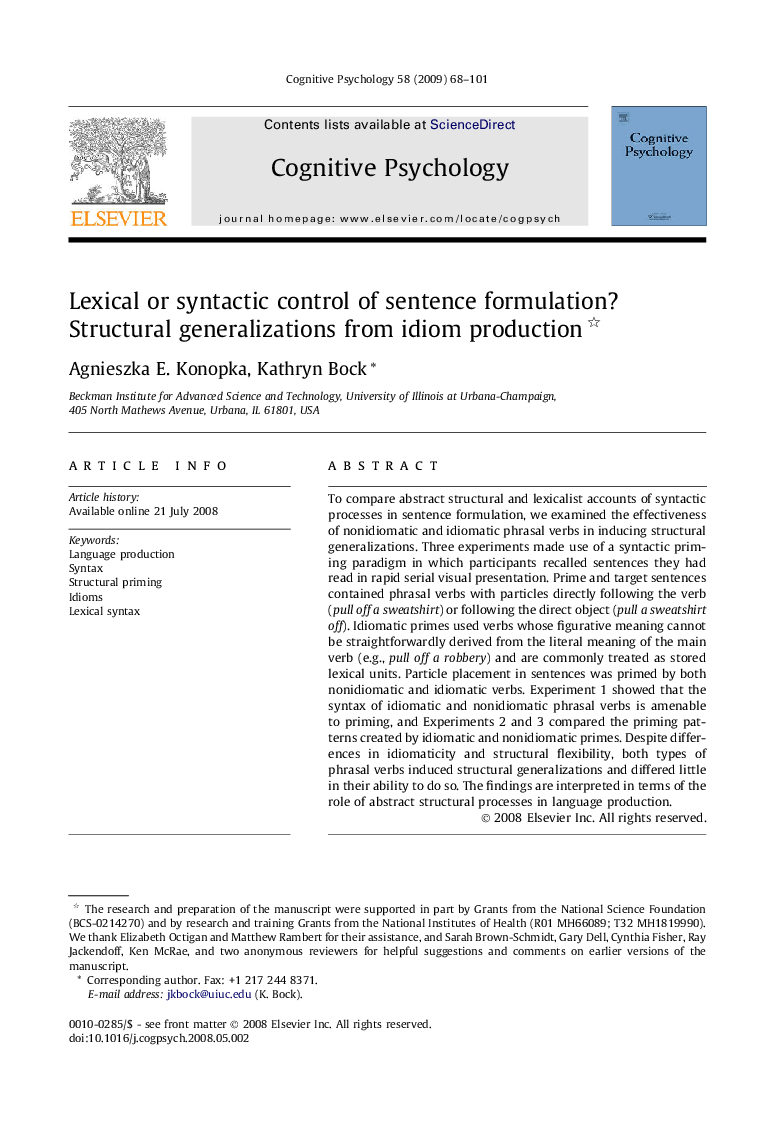| Article ID | Journal | Published Year | Pages | File Type |
|---|---|---|---|---|
| 917059 | Cognitive Psychology | 2009 | 34 Pages |
To compare abstract structural and lexicalist accounts of syntactic processes in sentence formulation, we examined the effectiveness of nonidiomatic and idiomatic phrasal verbs in inducing structural generalizations. Three experiments made use of a syntactic priming paradigm in which participants recalled sentences they had read in rapid serial visual presentation. Prime and target sentences contained phrasal verbs with particles directly following the verb (pull off a sweatshirt) or following the direct object (pull a sweatshirt off). Idiomatic primes used verbs whose figurative meaning cannot be straightforwardly derived from the literal meaning of the main verb (e.g., pull off a robbery) and are commonly treated as stored lexical units. Particle placement in sentences was primed by both nonidiomatic and idiomatic verbs. Experiment 1 showed that the syntax of idiomatic and nonidiomatic phrasal verbs is amenable to priming, and Experiments 2 and 3 compared the priming patterns created by idiomatic and nonidiomatic primes. Despite differences in idiomaticity and structural flexibility, both types of phrasal verbs induced structural generalizations and differed little in their ability to do so. The findings are interpreted in terms of the role of abstract structural processes in language production.
